Back in the time of its manufacture and for several years after, the Ross Compressor might well have appeared one of the least-distinguished things its creator, Bud Ross, had ever produced. After all, this is the guy who had founded Kustom Amps and landed those distinctive tuck-and-roll cabinets on stages behind Creedence Clearwater Revival, Johnny Cash, The Jackson 5, Leon Russell, and countless others. And when he wasn't hob-knobbing with major stars of the '60s and early '70s, he was inventing a hand-held police speed radar device and pioneering affordable home satellite TV systems.
Alongside all of this, that unassuming, gray, two-knob metal box was barely a footnote in musical history. That is, until Trey Anastasio put one on his pedalboard and guitarists of the late '90s and early '00s discovered that the Ross Compressor was one of the keys to the Phish guitarist's rich, succulent tone.


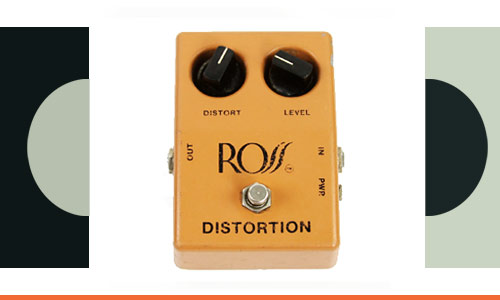
The scramble to obtain surviving Ross Compressors, originally made from the early-mid '70s to around 1980 (when production was briefly moved to Taiwan), triggered the laws of supply and demand in a major way, and sent prices skyrocketing. A poll of recent sales on Reverb shows original units selling for as much as $500 USD, with average prices in the upper $300 to lower $400 range. Over the years, several boutique makers have issued their own homages to the circuit, but none carried the official family imprimatur.
Which is to say, this was one pedal ripe for a reissue.
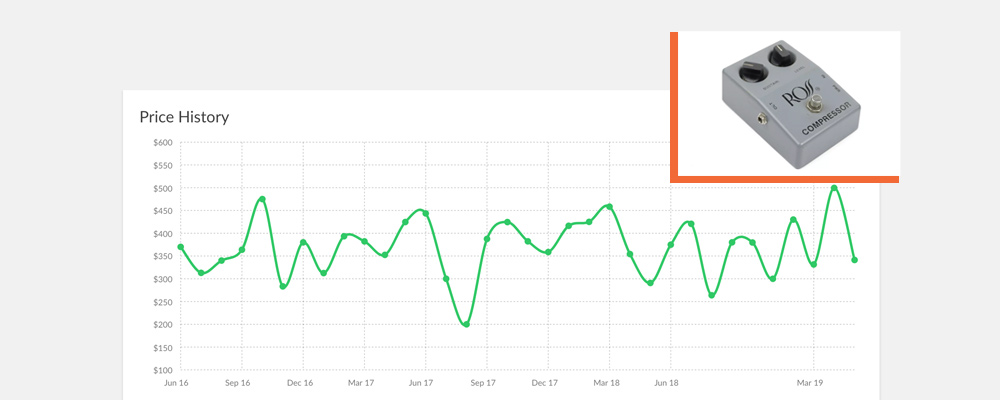
In 2018, Ross Audibles did just that. Founded by Bud Ross' grandson, Cameron Ross, and his childhood friend Ben Brazil, Ross Audibles meticulously reverse-engineered the gray Compressor—along with the much-loved, if less legendary, Ross Distortion—to bring them back to the market in as-close-to-original form as is humanly possible 45 years after their inception. Guitarists dubbed the results an unqualified success.
"We sold out all of our pre-orders," Ben tells Reverb, "and then we did a run for a distributor in Japan and those all went. We're slowly getting into dealers now, and are going to try to push our Reverb.com sales as well."
Put simply, the world's most iconic vintage compressor pedal is back, and will now be more widely available than ever before—but getting it there took some work, and a vision as big as that of Bud Ross himself. (You can order the new Ross Audibles Compressor and Distortion now.)
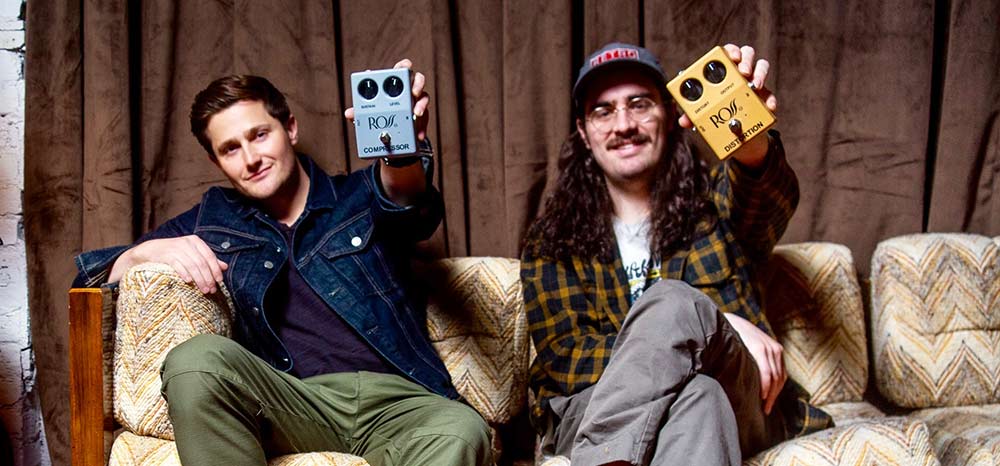
Fans of the original gray Ross Compressor and its extremely cool sibling the Ross Distortion will be excited to have these pedals back in their original incarnations, rather than reinterpreted by an unrelated company. But these releases from Ross Audibles also represent a return to form for the work of one of the guitar industry's more significant names in the world of solid-state electronics et al. Yet, amazingly, according to Cameron, Bud Ross had no background in electronics, but was a natural inventor and entrepreneur, and had the kind of vision necessary to both develop a desirable product, and to make it fly.
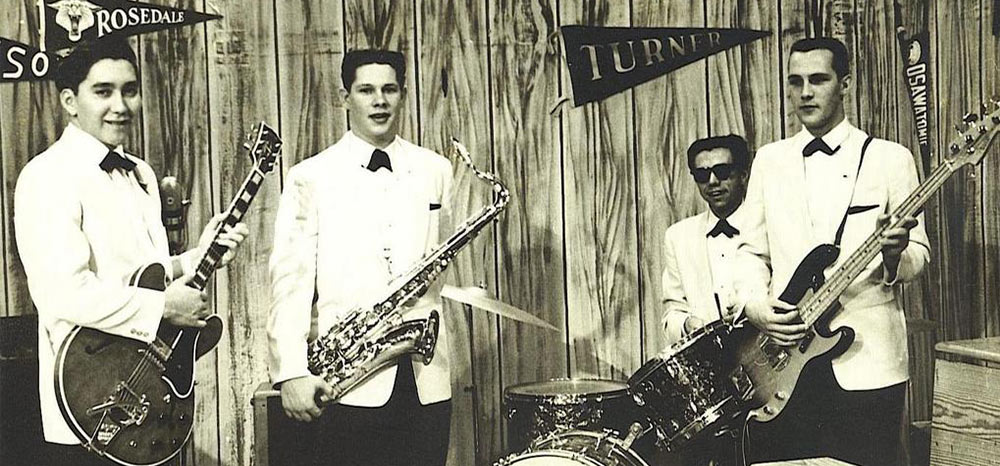
Born in West Virginia, Bud had moved to Kansas at the age of 12 when his mother took a job in Overland Park, southwest of Kansas City. In his teens, he began both managing and playing bass in local bands, but, as Cameron says, "He didn't like the bass amps that were available at the time... so he built his own."
It was playing at the Soc-Hop in Overland Park in 1960, according to the Kansas City Business Journal, that Bud encountered what would become the most distinguishing feature of his own future amp line. An attendee named Dave Gates was an experienced auto upholsterer, and asked if he could do a tuck-and-roll job on Ross' bass amp, giving it the padded Naugahyde look he'd been applying to the seats of many hot rods in the area.
Ross founded Kustom in 1964, and according to Cameron, he quit his day job and moved to Chanute, Kansas, because the small business association was giving people small loans to start new businesses there.
"It could have been any town in southeast Kansas," says Cameron, "but they picked Chanute because of a Mexican restaurant that they liked. They rented a small grocery store, an old one, and started making the amps out of that and lived in the apartment above it."
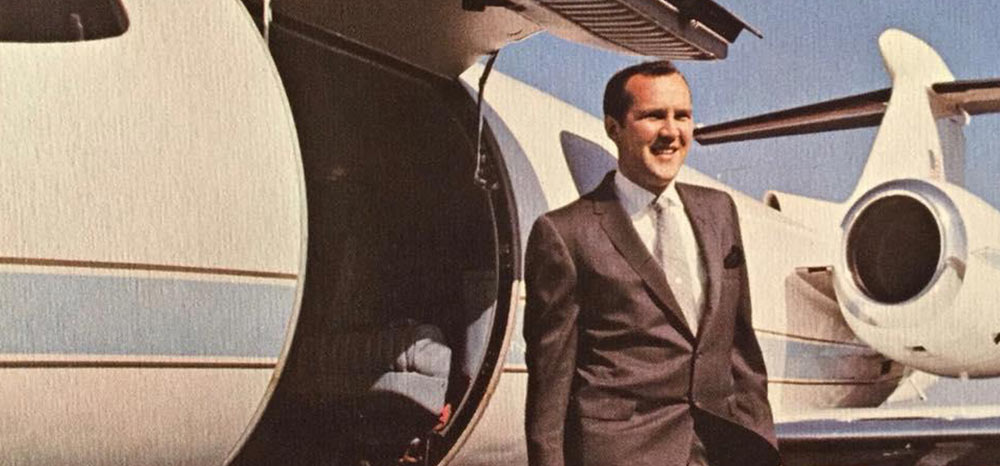
"Talking to my grandma, and talking to Bud," he adds, "they really pieced it all together in the early years. Giving Conway Twitty some amps to start things out, and giving free equipment to Johnny Cash. Then it really grew. I remember him telling me all the stories from his heyday: supplying amps for the Grateful Dead, Creedence Clearwater Revival, Leon Russell, and all the stuff he did with The Jackson 5—watching the kids perform in their garage, crazy stories like that! One of my dad's best friends, who grew up with him, told me about coming over to the house to get my dad, and Neil Diamond was sitting there with Bud, just hanging out, swapping stories. He loved doing what he did!"
After growing Kustom Amplification into one of the more successful—and most recognized— manufacturers of solid-state guitar amps in America, Ross sold the company to Baldwin Pianos in 1972, and launched Ross Musical shortly after.
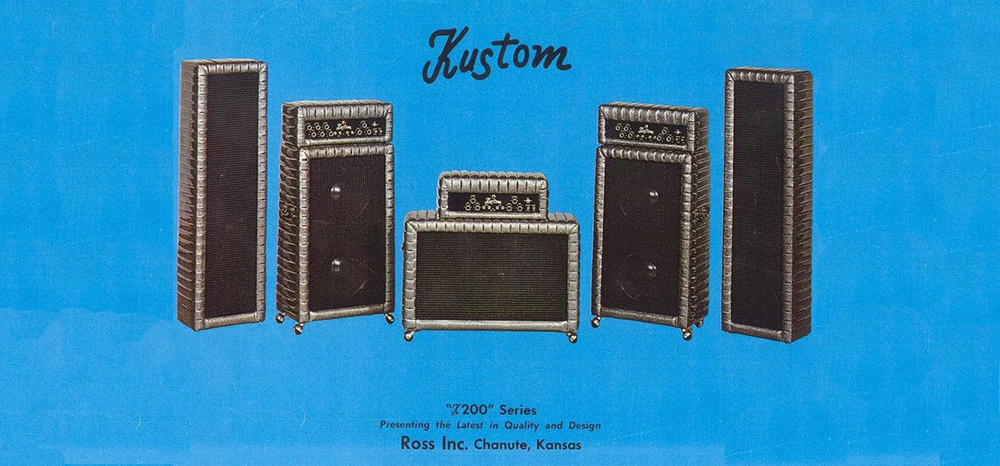
"The first year or two they did some prototype-style pedals that you can still find floating around," Ben tells us. "They don't have the recessed knobs and they look a lot more like an MXR, with a script font as well. It must have been a couple years after that that they came out with the first real line, probably in '74."
If the initial Ross lineup of Compressor, Distortion, and Phase R1 looked a lot like the popular MXR pedals that had preceded them, that's because they had taken their inspiration largely from the latter's Dyna Comp, Distortion+, and Phase 45 units. As Ross developed the line, however, their own products grew more distinctive.
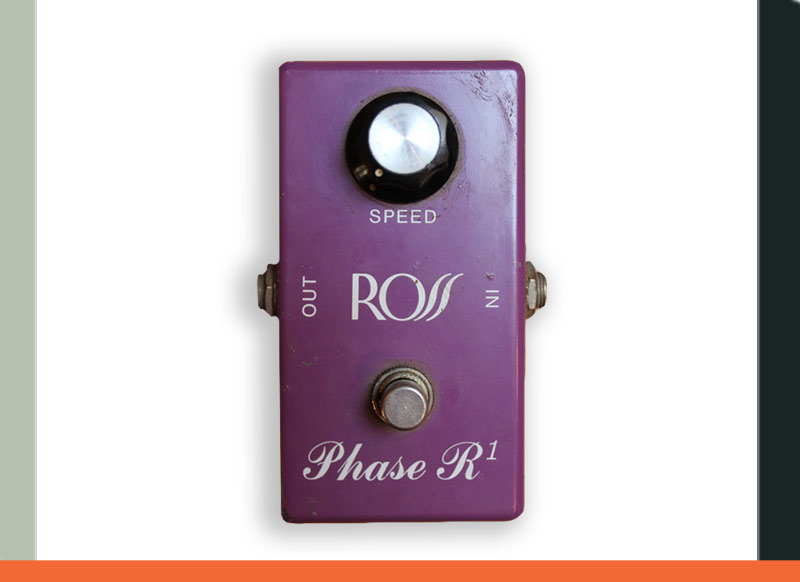
Regarding the Compressor in particular, Ben says, "It was about as good a technology as you could have. It's loosely based—or probably pretty closely based—on the MXR Dyna Comp, but with objective taste improvements on their end, for which Bud commissioned Jerry Schell. But I think it's just a very, very sturdy circuit. It does what it's supposed to do, and I think it's got a lot more character than most compressors you hear. It's a lot more colored and textured than a new, very stark compressor. It's musical, and I think that's what makes it really stand out, that it's not just a dynamic control, it's also an effect on its own, the way it colors the sound."
While vintage MXR Dyna Comps are desirable and collectible in their own right, the Ross Compressor outstrips these factors by a long shot, further proving that you need only change a few components within any relatively simple effect circuit to alter the results in a positive and desirable way.
Much as with the success that followed Bud Ross' decision to use tuck-and-roll Naugahyde upholstery for his Kustom amps, a further stroke of design genius took his pedals away from the realm of "mere copies" for the release of the proper lineup in '74 or '75, and would forever set them apart from others in the field. This aspect of their manufacturing would also, however, prove one of the more challenging for Cameron and Ben to reproduce.
After initially building the pedals in generic, rectangular, MXR-style boxes, Ross commissioned a custom-manufactured enclosure in a wider shape, with more rounded corners and edges, an upward-sloping forward face, and an upper shelf with recesses for the knobs. The design proved both distinctive and functional, since it tilted the footswitch forward for easy stomping, while offering protection to the potentially fragile knobs above.
"We did a lot of work on that, to get it as close to the originals as possible. - Cameron Ross
All that being said, since it's not the kind of off-the-shelf box that many boutique pedal makers use, it took the new Ross Audibles operation some scrambling to bring it back to life.
"When we got the older one and started this process, we had to find a manufacturer who could replicate the enclosure," says Cameron, "because it was a unique enclosure at the time, and I don't think there's anything quite like it out there right now. So we did a lot of work on that, to get it as close to the originals as possible."

Ben adds, "That was basically me sitting down with a ruler and a laptop and just hammering it out (laughs), and really developing a relationship with our foundry. That was our biggest expense going in, and our biggest barrier to entry, and I think it's really, really great that we can bring that enclosure back."
Similarly, every effort was made to precisely replicate the circuits, layouts, and components of both the Compressor and the Distortion. "I matched even the geometry of the traces to the original PCB (printed circuit board)," Ben tells us, "and it's to spec totally. It's a newer PCB, but is basically the exact same PCB as the vintage one. We used new old stock (NOS) ICs and NOS germanium diodes and tantalum caps, which I think really contributes to the sound."

Although it's less well-known than the Compressor, the Distortion has won plenty of fans over the years for its transparent, medium-gain overdrive sound. As Ben puts it, "It plays well with every amp. It's just a very pleasing distortion all the way across the board, wherever the knobs are set. It really is the sound of an op-amp driving germanium diodes, and I think you allow a lot more room for nuance when you make it so simple."
Ultimately, Cameron tells Reverb, Ross Audibles intends to release the full original lineup from the Ross Musical factory in Chanute, Kansas. In addition to the traditionally sized Compressor, Distortion, and Phaser, this would eventually include the company's big-box and dual-effect pedals of the '70s, such as the Phaser Distortion, Stereo Delay, Flanger, and 10 Band Graphic Equalizer.
After that, we could even see some new members to the family. "The line is missing a fuzz pedal, in my opinion," Ben says, "and maybe a more classic overdrive based on an amplifier circuitry."
Whatever comes along, though, Ross Audibles intends to remain "true to the way Bud did it," Ben concludes, "taking everything we've gathered from him and pushing that approach forward with some super high-quality products."



